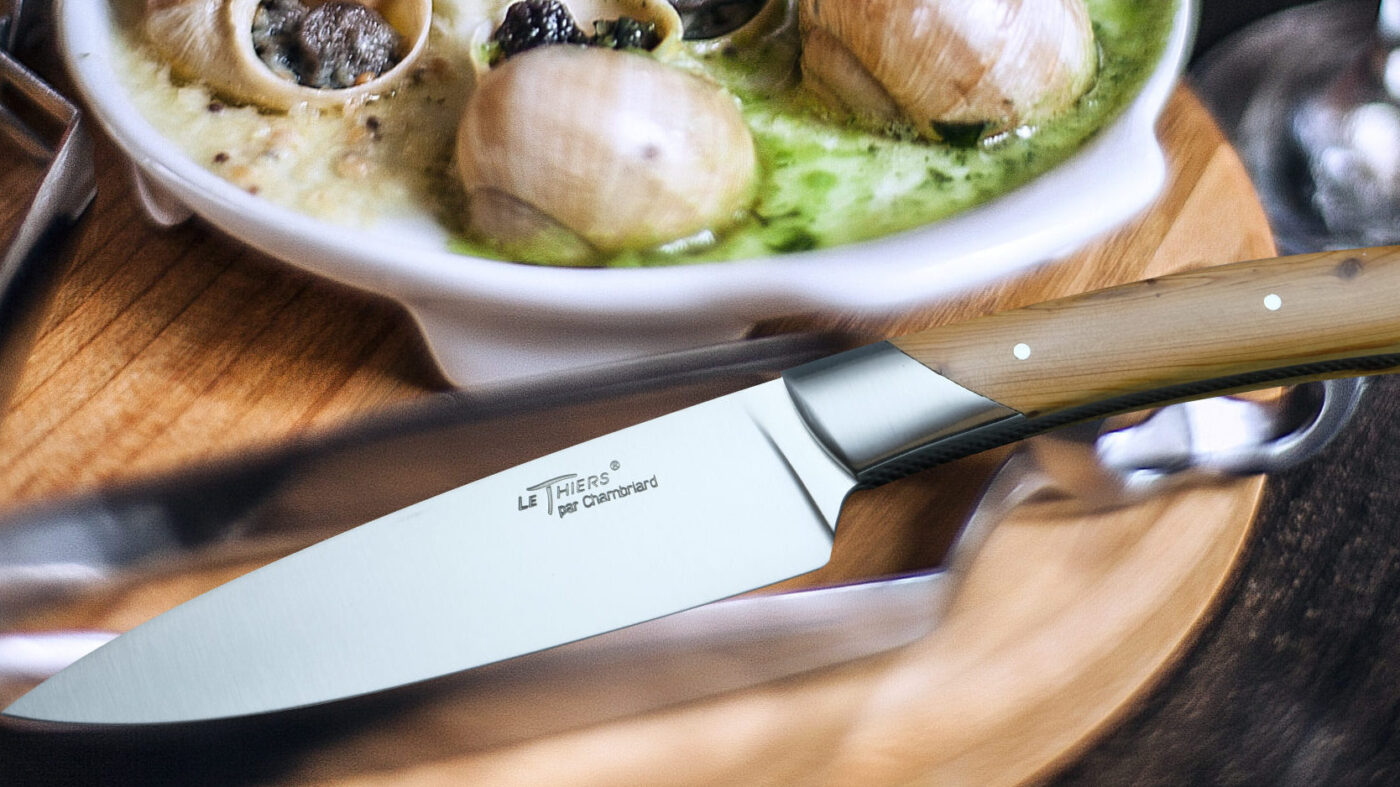Carving knife, tournament knife and filleting knife, kitchen knife of French origin
In our block article – series about European kitchen knives, we would like to explain both the historical development and the special features of the individual knife types.
You can already hear it by the sound of the names of these three types of knives. They have their origins in French cuisine. In the baroque, well Since the 18th century, the food culture of the nobility and the upper bourgeoisie has been refined to the extreme.
The sumptuous meal that was invited to was often pure self-portrayal. Eating as a mere sustenance was for the common folk of the country.
Upper class food culture had to go hand in hand with education and sensuality.
Food was an event, dance, music, fireworks and gondola rides were part of the entertainment.
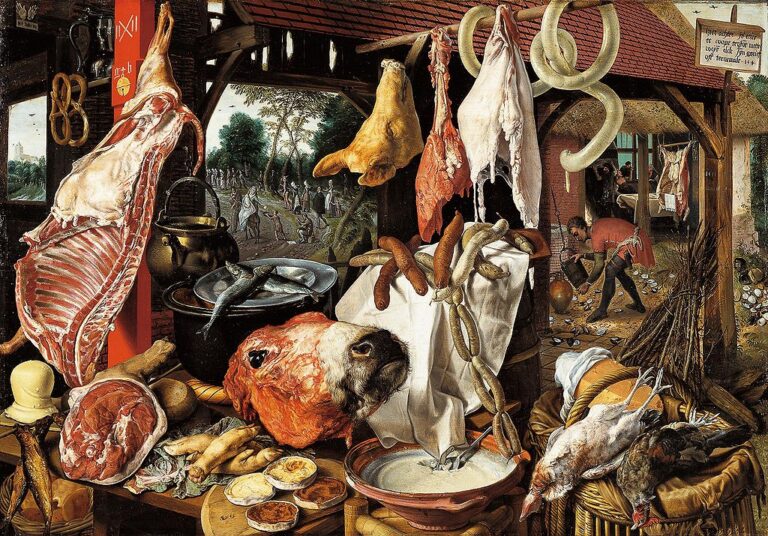
The kitchen battle, eat in the baroque style
For the kitchens and the army of their employees, it was a great challenge to keep creating new dishes. To create a sensual taste experience, the dishes also had to impress the audience with their presentation or design.
The colonies in America and Africa always supplied the markets with new delicacies. Cane sugar, cocoa and coffee are to be mentioned here. The patisserie was booming.
For the exotic raw materials, you needed tools that could meet the demands of top-class cuisine.
The filleting knife for the thinnest slices of fish, boneless.
The paring knife for finely cutting, carving and cutting out fruit and vegetables.
The carving knife was developed for precise cuts in meat and poultry.
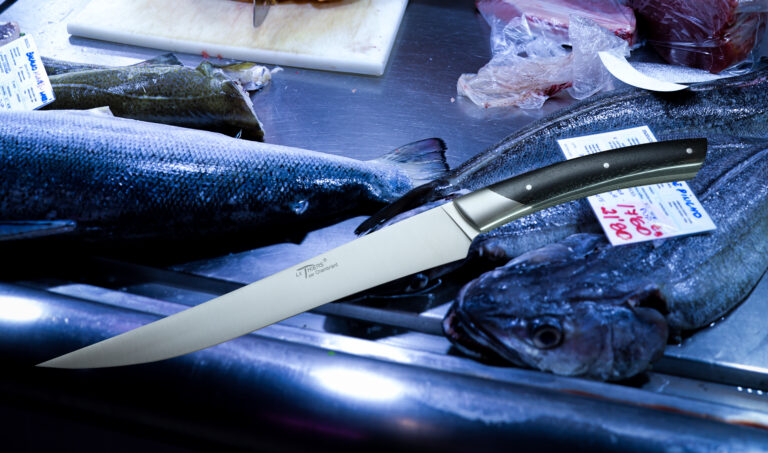
The filleting knife belongs in every good kitchen
We will describe these types of knives, which are important in the kitchen, and their area of application in more detail here.
The fillet knife or also in German filleting knife
This knife is an important tool for dividing all kinds of meat and fish. If the knife is used with a practiced hand, it is possible to cut off the finest pieces and slices.
This is important for cooking times, tenderness and palatability of raw meat. There is also an economic factor. The raw material is better utilized and there is less waste.
The shape of the knife is slim and pointed. The blade length varies from 15 to 18 cm. The blade is thin and often flexible, which is a very important requirement for proper filleting. The blade is bent by applying light pressure.
Cutting thin slices is the main task of the filleting knife. But also the removal of tendons, skin or strands of fat is part of the work area of this knife. The knife is particularly suitable due to its flexibility when removing fish meat from the carcass.
If you want to buy a knife of this type in our shop, we recommend a knife with a length of 16 cm to start with. It should be flexible so that the blade can be easily deflected when cutting.
Since the fillet is often used for fish, a water-resistant handle is an advantage. The black plastic POM is very suitable for this. New materials such as Kevlar, for the F1 Carbon knives by Goyon Chazeau, or acrylic by the Italian knife manufacturer Berti, are absolutely moisture-resistant.
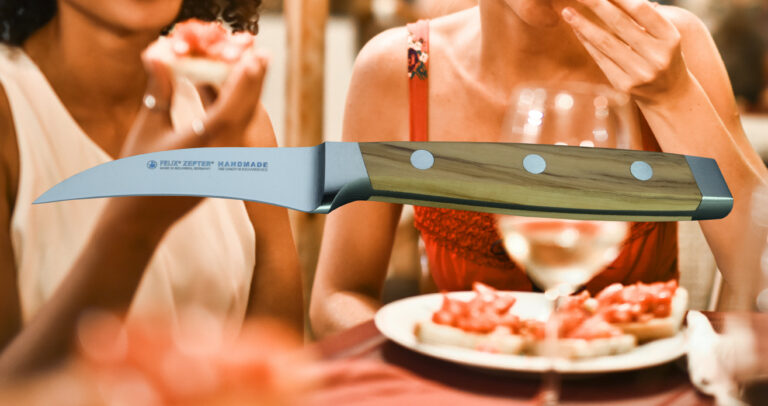
The tournament knife carving, cutting and sculpting tool
The small knife with the curved blade. The finest knife for small individual carvings.
Touring is the French term for the fine shaping and carving of fruits and raw vegetables. Craftsmanship is required here, and it’s fun to cut a carrot into the shape of a flower, or slice fruit into fans.
You can recognize the Tournier by the beak-shaped blade. The blade is somewhat flexible and can be bent elastically under pressure. The blade is about 6 to 7 centimeters long. The tip is sharpened. The blade very thin.
This knife is the carving knife in the kitchen. All shapes that require curved cuts are tourned.
For the entremetier, tournament techniques are an important part of his skills. The knife is essential when shaping and shaping firm pulp.
Which paring knife should you have in the kitchen?
The classic. A light, small knife with a beak-shaped blade, six to three inches long.
It must be easy to rotate in the hand. It was developed for artistic work. The handle materials are varied, depending on your preference. Wood is warm and comfortable to hold, plastic is the water-resistant version.
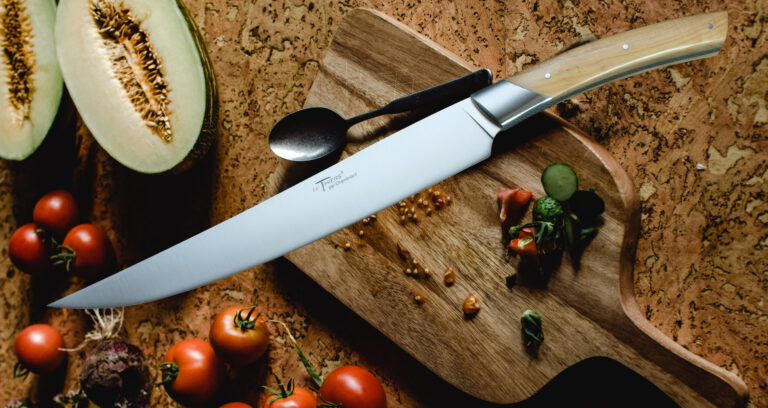
The carving knife. Nothing for vegetarians.
The carving knife is a real meat knife. It is designed for dividing and dicing meat.
An exact piece can be cut off even from large parts with a straight, flat cut. The blade is narrow, long and tapering.
These knives have a solid, torsion-resistant blade. They are usually 20 to 26 cm long.
There is an extra short variant around 15 cm long. This small knife is intended for finer meat work.
As I said, we’re talking about a meat knife. The term carving means the skillful dissection and cutting of meat into pieces. Of course, this also applies to fish and poultry.
In the past, when you could still see the whole piece or the uncut animal, people would carve at the table. Doing this professionally was a fine art and the “Chef de rang” reserved.
Which knife is right for you depends on your kitchen and the types of meat you use most. A blade of 20 cm is sufficient for normal portioned roasts.
A curved, larger blade is recommended for ham or large BBQ pieces. Meat knives from France prefer curved blades that are also ideally shaped for poultry and fish.
In our shop you will find a variety of different special knives in all lengths and shapes. Handle materials are made from traditional, domestic or exotic woods. Plastics range from the tried and tested black POM to Plexiglas and Micarta to Kevlar.
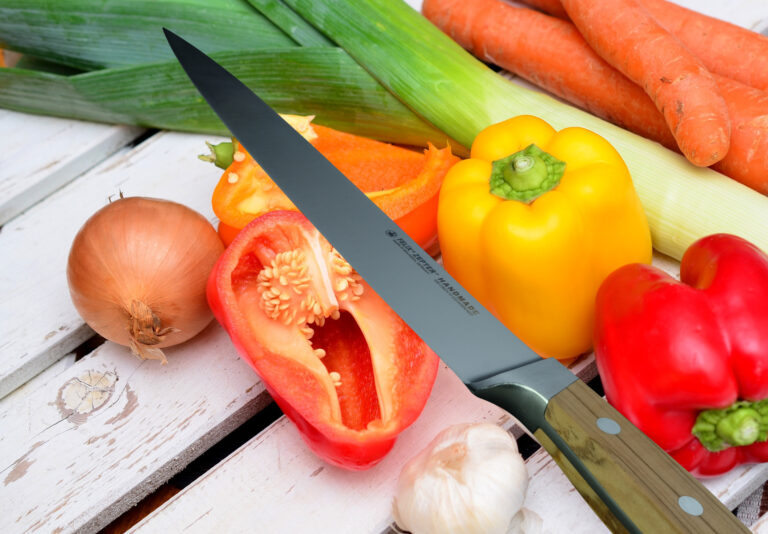
In our fifth blog post in the European kitchen knife series, we’ll explore another question.
Why do our knife manufacturers make knives based on Asian models and what do we use them for in our home kitchen?

